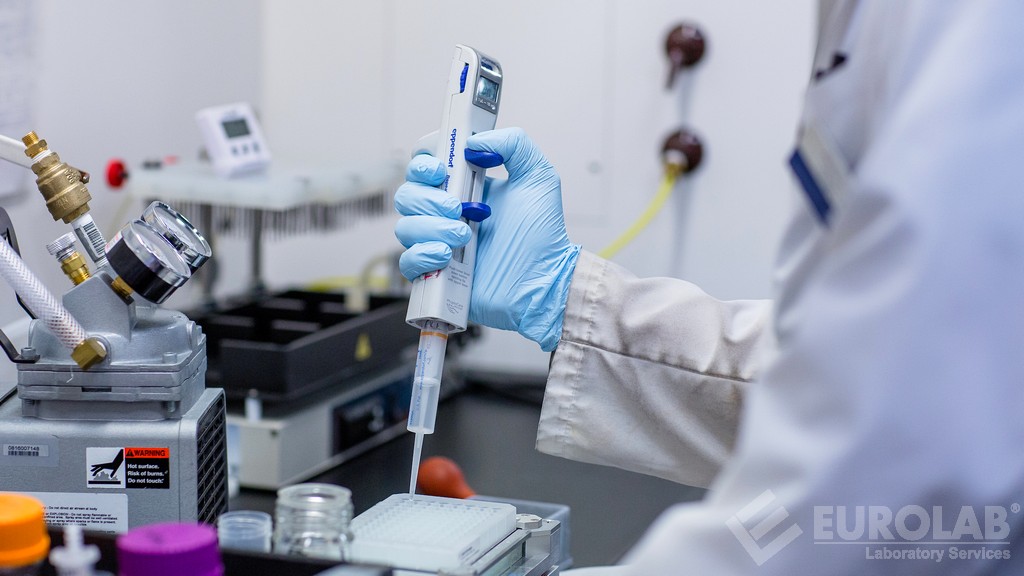IEC 61000 Electromagnetic Compatibility Safety Testing
The International Electrotechnical Commission (IEC) standard IEC 61000-4-3 provides a framework for electromagnetic compatibility (EMC) testing of renewable energy systems. EMC refers to the ability of electrical and electronic equipment, including renewable energy systems, to function properly in their electromagnetic environment without causing harmful interference to other devices.
The standard aims to ensure that all components within the system can coexist harmoniously under conditions of electromagnetic disturbance. This is particularly critical for renewable energy systems such as wind turbines, solar panels, and battery storage units which are exposed to a variety of environmental factors including strong winds, temperature fluctuations, humidity, and electromagnetic interference (EMI). Proper EMC testing ensures that these components do not generate excessive EMI or suffer from it.
Compliance with IEC 61000 is essential for the safe operation and integration of renewable energy systems into existing power grids. The standard covers various aspects of EMC, including conducted emissions, radiated emissions, immunity to conducted disturbances, and immunity to radiated disturbances. These tests are performed using specialized equipment like spectrum analyzers, network analyzers, and EMI chambers.
During the testing process, the system under test (SUT) is subjected to a series of predefined conditions that simulate real-world scenarios. The SUT includes all relevant components such as inverters, controllers, transformers, and other devices that are part of the renewable energy system. The tests are designed to evaluate the performance of these components in terms of their ability to generate and withstand electromagnetic interference.
The IEC 61000 standard is widely recognized across the global energy sector for its comprehensive approach to EMC testing. It provides a robust framework that helps ensure the reliability, safety, and interoperability of renewable energy systems. Compliance with this standard is not only essential for meeting regulatory requirements but also for maintaining a high level of quality in the design and manufacturing of these systems.
The testing process typically involves several stages. Initially, the SUT is subjected to conducted emissions tests to determine if it complies with specified limits on electromagnetic interference that can be transmitted through wires or cables. Next, radiated emissions tests are performed to ensure that the system does not emit excessive radio frequency (RF) energy into its environment. The system’s ability to withstand conducted and radiated disturbances is also tested.
Accurate measurement of these parameters requires precise instrumentation capable of capturing even the slightest deviations from acceptable levels. Spectrum analyzers, network analyzers, and EMI chambers are commonly used for this purpose. These instruments provide detailed data on the frequency and amplitude of electromagnetic signals, which can then be analyzed to determine compliance with IEC 61000 standards.
The testing process is highly technical and requires a deep understanding of both electrical engineering principles and regulatory requirements. Quality managers, compliance officers, R&D engineers, and procurement professionals all play crucial roles in ensuring that the system under test meets the necessary EMC criteria. By doing so, they help to ensure the safe and reliable operation of renewable energy systems.
In conclusion, IEC 61000-4-3 is an essential standard for ensuring the electromagnetic compatibility of renewable energy systems. It provides a framework that helps manufacturers design products that can coexist harmoniously with other devices in their environment. By following this standard, they ensure compliance with regulatory requirements and maintain a high level of quality in their products.
Benefits
The benefits of adhering to the IEC 61000-4-3 standard are numerous and far-reaching. Firstly, it ensures that renewable energy systems can operate safely and reliably in a wide range of environments. This is critical for the success of any renewable energy project, as it helps to minimize downtime and maintenance costs.
Secondly, compliance with this standard enhances the interoperability of renewable energy systems with existing power grids. By ensuring that all components within the system are EMC compliant, it becomes easier to integrate these systems into larger networks without causing interference or instability. This is particularly important for large-scale solar farms and wind farms which often operate in close proximity to other electrical infrastructure.
Thirdly, IEC 61000-4-3 helps to maintain the quality of renewable energy products by providing clear guidelines on how they should be designed and manufactured. This ensures that all components within the system meet the necessary standards for safety, reliability, and performance. As a result, end-users can have confidence in the quality of the products they purchase.
Finally, compliance with this standard is often a requirement under international regulations and directives such as the EU's Low Voltage Directive (LVD) and the Restriction of Hazardous Substances (RoHS). By adhering to these standards, manufacturers can ensure that their products meet all necessary regulatory requirements. This helps to avoid costly delays and penalties associated with non-compliance.
In summary, the benefits of IEC 61000-4-3 are clear: it enhances safety, reliability, interoperability, and quality in renewable energy systems. These benefits not only improve the performance of individual components but also contribute to the overall success of renewable energy projects.
Quality and Reliability Assurance
The testing process described by IEC 61000-4-3 plays a crucial role in ensuring the quality and reliability of renewable energy systems. Quality assurance (QA) is an integral part of this process, as it ensures that all components within the system meet specified standards for safety and performance.
The first step in QA is to establish clear objectives and criteria for each test parameter. This involves defining acceptable limits for conducted emissions, radiated emissions, immunity to conducted disturbances, and immunity to radiated disturbances. These criteria are based on international standards such as IEC 61000-4-3, which provide a comprehensive framework for EMC testing.
Once the objectives have been established, the next step is to select appropriate test equipment. This includes spectrum analyzers, network analyzers, and EMI chambers, among others. The selection of this equipment is critical as it directly affects the accuracy and reliability of the test results. It is important to ensure that all instruments are calibrated regularly to maintain their accuracy.
The testing process itself involves subjecting the SUT to a series of predefined conditions that simulate real-world scenarios. During these tests, detailed measurements are taken using the selected instrumentation. These measurements provide valuable insights into the performance of the system under test and help identify any areas where improvements can be made.
After completing the testing process, the data is analyzed to determine compliance with IEC 61000-4-3 standards. If the SUT fails to meet these criteria, corrective actions are taken to address any issues identified during the tests. This may involve adjusting design parameters or making changes to manufacturing processes.
The final step in QA is to document all aspects of the testing process. This includes recording test conditions, measurement results, and any corrective actions taken. Documentation ensures transparency and accountability throughout the entire process. It also provides valuable information for future reference and helps ensure consistency across different projects.
By following a rigorous QA process based on IEC 61000-4-3 standards, manufacturers can ensure that their renewable energy systems meet high quality and reliability standards. This not only enhances the safety and performance of individual components but also contributes to the overall success of renewable energy projects.
Use Cases and Application Examples
The application of IEC 61000-4-3 in real-world scenarios is vast and varied. One common use case involves testing inverters used in solar photovoltaic (PV) systems. Inverters are responsible for converting direct current (DC) from the PV panels into alternating current (AC) suitable for grid connection or off-grid applications.
During EMC testing, the inverter is subjected to conducted emissions tests to ensure that it does not generate excessive electromagnetic interference through its output cables. Radiated emissions tests are also performed to verify that the inverter does not emit harmful RF energy into its environment. The system’s ability to withstand conducted and radiated disturbances is also tested.
Another example involves wind turbines, where EMC testing ensures that the turbine’s control systems can operate reliably in a highly dynamic electromagnetic environment. This includes testing for immunity to both conducted and radiated disturbances, ensuring that the turbine can continue operating safely even if subjected to electromagnetic interference from other sources such as nearby power lines or radio transmitters.
In addition to these specific applications, IEC 61000-4-3 is also used in the testing of battery storage systems. These systems are critical for energy management and grid stability but must be designed to operate safely and reliably in a wide range of electromagnetic environments. EMC testing ensures that they meet all necessary standards for safety and performance.
Finally, IEC 61000-4-3 is also used in the testing of hybrid systems combining different renewable energy sources such as wind turbines and solar PV panels. These systems are designed to optimize energy production by balancing the output from various sources. EMC testing ensures that all components within these hybrid systems can coexist harmoniously without causing interference or instability.
In summary, IEC 61000-4-3 plays a vital role in ensuring the safety and reliability of renewable energy systems across a wide range of applications. By applying this standard to real-world scenarios, manufacturers can ensure that their products meet high quality standards and operate safely and reliably in diverse environments.





